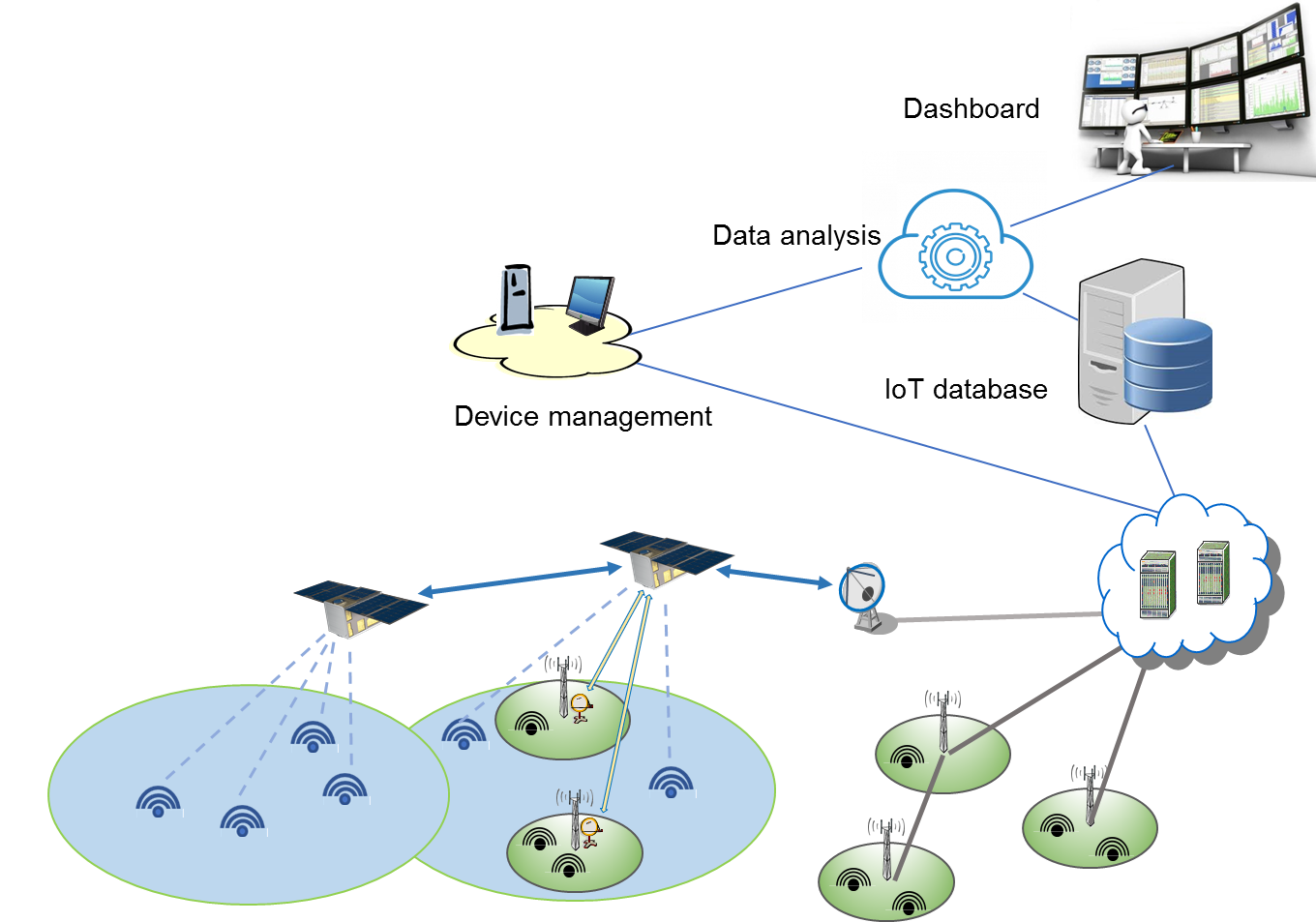Internet of Things
We are seeing the fast development of Internet of Things (IoT) networks. They have been developed initially with purely terrestrial connectivity, with unlicensed spectrum radio links (SigFox, Lora) or using licensed spectrum 4G cellular networks (LTE-M, NB-IoT). When extended coverage is required, satellite backhaul is also sometimes used to connect IoT base stations in remote areas.
As an alternative to terrestrial solutions, pure satellite networks are also available: they use GEO or LEO satellites with proprietary interfaces in Mobile Satellite Service (MSS) frequency bands: UHF, L, S. As a recent evolution we are also seeing many new constellation projects emerging with nanosatellites proposed to connect low cost IoT devices in MSS or unlicensed spectrum.
There are big expectations for IoT with billions of devices expected to be connected in coming years. It concerns a variety of applications such as smart metering, asset tracking, etc. With many devices collecting a rich set of data, value added services are also sometimes proposed using state-of-the-art Artificial Intelligence (AI) analysis.
Figure below is an illustration of a vertical IoT application with a variety of devices, terrestrial as well as satellite connectivity, centralized device management as well as big data collection and analysis functions. Cell & Sat is partnering with expert companies in the field to define complete IoT solutions including sensors, communication terminals, terrestrial or satellite connectivity solutions as well as value added data processing.

All newsLatest news
- Cellular growth: more than 8.3 billions subscribers !
- The number of cellular users reached 8.3 Billions, more than the world population, and is growing at a rate exceeding 10% annually.
